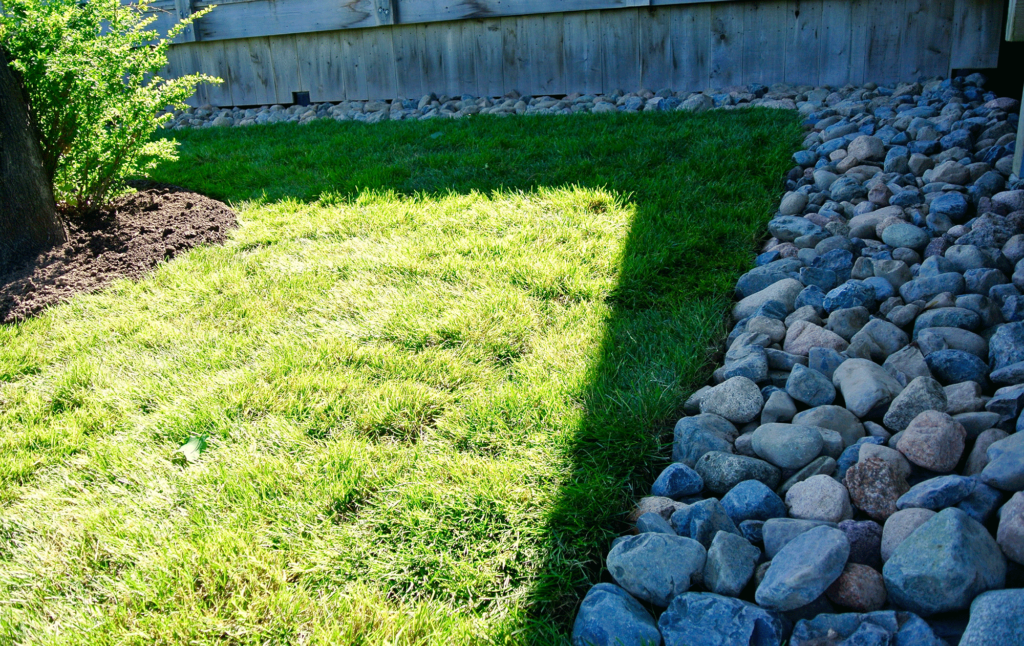Whether one believes that global warming is creating warmer temperatures in our region or not, one thing is true for sure: when we do have weather events, they are far more severe than in the recent past. Ice storms, hurricane winds, and rain storms mimicking monsoons all have had an impact on us in one manner or another recently. When it comes to our property, one of the most damaging forces is water; be it in the form of a flood, or more commonly, lack of sufficient drainage away from your house foundation and off your property. Have a look at your property to identify areas where water is not draining sufficiently and is taking an extraordinary amount of time to dry up. There are measures that can be taken with the help of a professional landscape crew to reduce or eliminate the amount of stagnant water on your property, such as a dry creek, swale, french drain, or drip edge.

A dry creek bed is a ditch like area which is lined with natural rock and stone of various sizes to aid with heavy water flow. It is attractive in the middle of summer when it is dry, but is very functional when a large flow of water appears with rainstorms. If the flow of water is not as heavy, but direction needs to be given to the water so it does not flow in unwanted areas of the yard, a swale can be constructed. The swale is a shallow, contoured ditch-like area that directs the water on a specific course, usually as part of the lawn. French drains can also be constructed for areas that require drainage of a reasonably heavy flow of water, which are in the parameters of a lawn and need to be easily maintained. A french drain consists of a ditch that has been filled with drainage stone and piping and which is finished at the same grade as the surrounding lawn. Often a french drain is installed where water flow is coming from eavestrough pipes and is contributing to washouts in the lawn or shrub beds. French drains are often finished with sod to camouflage their existence. Around the foundation of a house or other structure, a “drip-edge” consisting of drainage stone can be helpful in allowing water to drain easily down into the subsurface layers of subsoil and gravel and down into the water table rather than sitting close to your foundation wall. Coincidentally, a drip edge can also be an attractive way to deal with areas that are particularly dry and do not promote good plant growth or grass growth next to a foundation.
Make a note in the coming months of what areas in your yard appear to hold water for longer than one day. Have a look at the grade of your property as it relates to your house. Does the land flow toward your house, or away? Do you have washouts every Spring or every rainstorm in a particular area? Is one part of your property consistently soggy? Don’t assume there is nothing you can do to prevent water damaging your biggest investment. Talk to a certified, professional landscaper (like Urban Landscaping!) about what options you have to protect your home and keep your property looking beautiful and free of water damage. You’ll be amazed at the results when we gently nudge Mother Nature in the right direction!